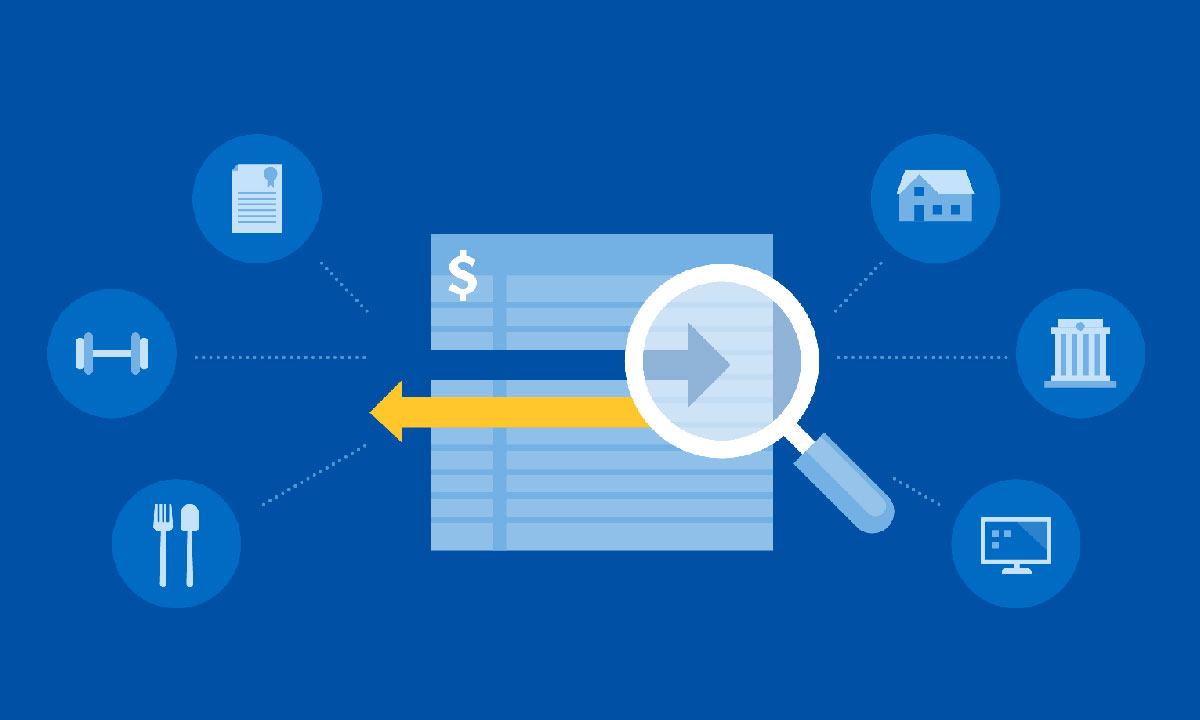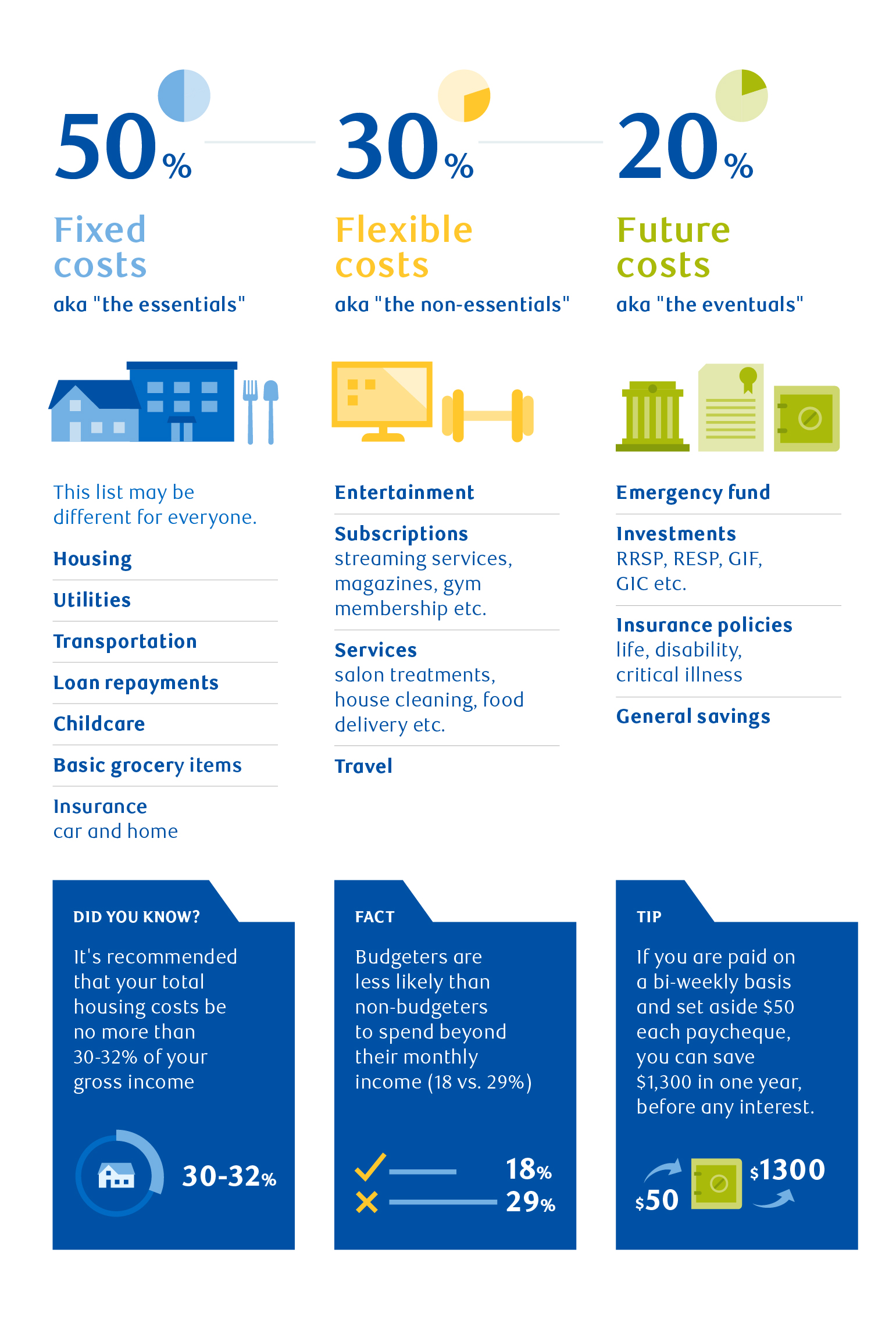How to Build a Budget


By Author: Shannon Lee Miller Graphics: Shannon Lattin • Published July 9, 2020 • 6 Min Read
Did you know that about half of Canadians (49%) use a budget to manage their money? Creating a budget can help you control your spending, reduce debt, and prepare for the future. It gives you a clearer picture of where your money goes so you can make confident financial decisions.
In this article, we’ll walk you through simple steps to build a budget that fits your goals and lifestyle.
Learn how to create your first budget with these four easy steps:
Setting a budget can be beneficial, but creating one might not always feel compelling. It’s good to have a goal in mind when you create a budget so you’re more likely to stick to it.
Paying down debt
Managing money inflow and outflow so you don’t have to live paycheque to paycheque
Saving for a large purchase like a home or car
Saving for a trip
Increasing disposable income for savings or investments
Calculate your monthly income and monthly expenses. In order to use more accurate numbers for this calculation, try to track everything you spend for one to two months. Remember to include things like your morning coffee, take out dinners and entertainment. This will give you a good idea of where your money goes. Tracking every single purchase might be difficult to do if this is new for you. See if your bank offers a service that tracks your spending, like the RBC NOMI app. Be extra mindful of the cash purchases you make and don’t forget to track them in a spreadsheet, a note in your phone or by using an app. There are apps available like Mint or Pocketguard, but do your research first to find one you’re comfortable using.
Once you have these results, compare what you make after taxes each month to what you spend.
If your expenditures are higher than your income, your first step is to reduce expenses where possible. This can be done in a number of ways — like cutting streaming services you don’t use often, curbing that excessive take out habit or something more significant like getting rid of a car.
Divide costs into fixed, flexible, and future.
Fixed costs are the necessities (mortgage payments, utility bills, food)
Flexible costs are not necessary, but nice to haves (entertainment, gifts, memberships, and travel)
Future costs are savings, the things that may be needed one day (investments, an emergency fund, insurance)
A great way to divide these costs is by using the efficient 50-30-20 rule.

Read more about how to fit life insurance into your budget.
Set aside time each month to check-in. If you’re having trouble sticking to your budget, it might be time to try something new. You want your budget to be realistic and not the new mission impossible.
Find YOUR maintenance approach. Track spending with a spreadsheet, carry a set amount of cash instead of credit, or like 20 per cent of Canadians, try software or a mobile app to monitor money. Some helpful tools include Mint and Budget Planner by the FCAC. Whatever the approach, find a strategy that works for you.
Source:
Financial Consumer Agency of Canada. Canadians And Their Money: Key Findings from the 2019 Financial Capability Survey. 2019.
This list may be different for everyone.
Housing
Utilities
Transportation
Loan repayments
Childcare
Basic grocery items
Insurance (car and home)
Housing
Utilities
Transportation
Loan repayments
Childcare
Basic grocery items
DID YOU KNOW? It’s recommended that your total housing costs be no more than 30-32% of your gross income.
Entertainment
Subscriptions (streaming services, magazines, gym membership etc.)
Services (salon treatments, house cleaning, food delivery etc.)
Travel
FACT: Budgeters are less likely than non-budgeters to spend beyond their monthly income (18 vs. 29%)
Emergency fund
Retirement solutions and investments (RRSP, RESP, GIF, GIC etc.)
Personal insurance policies (life insurance, disability insurance, critical illness insurance)
General savings
TIP: If you are paid on a bi-weekly basis and set aside $50 each paycheque, you can save $1,300 in one year, before any interest.
A practical way to divide your budget is by using the 50-30-20 rule. This means allocating 50% of your income to fixed expenses like housing, utilities, and transportation, 30% to flexible or personal spending such as entertainment or dining out, and 20% to savings, investments, or debt repayment. This method helps balance your needs, wants, and long-term goals while keeping your finances manageable.
Your budget should include a detailed list of your income sources and all monthly expenses, divided into essential and non-essential categories. It should clearly show how much you earn, how much you spend, and how much you save each month. A good budget is realistic, easy to update, and tailored to your lifestyle so it can guide your day-to-day financial decisions.
To make a monthly budget, start by calculating your total monthly income after taxes. Then, track all your expenses for a month, including bills, groceries, transportation, and discretionary spending. Categorize each expense, compare it to your income, and adjust where necessary. Tools like RBC NOMI or Budget Planner by the FCAC can help automate tracking and identify spending patterns.
A budget plan outlines how you’ll manage your money over time. Begin with a clear financial goal—such as paying off debt or saving for a down payment—then calculate your monthly income and expenses. Use those numbers to create spending limits for each category, allocate funds for savings, and set up automatic transfers or reminders to stay consistent.
As a general guideline, food expenses should make up about 10% to 15% of your monthly take-home income. This includes groceries, dining out, and snacks. Your exact amount may vary depending on your household size, dietary preferences, and location. Tracking your food spending for a few months can help you set a realistic target that fits your lifestyle.
A personal budget is a plan that tracks your income, expenses, and savings so you can manage your money effectively. It helps you see where your money goes, avoid overspending, and reach financial goals like paying off debt or building an emergency fund. A personal budget can be created manually, in a spreadsheet, or with budgeting apps for convenience.
Your ideal budget depends on your income, expenses, and financial priorities. Start by covering essential costs like housing, food, and transportation, then allocate money for savings and discretionary spending. Many Canadians use the 50-30-20 rule as a starting point, but you can adjust the percentages based on your situation and goals.
*Home and auto insurance products are distributed by RBC Insurance Agency Ltd. and underwritten by Aviva General Insurance Company. In Quebec, RBC Insurance Agency Ltd. Is registered as a damage insurance agency. As a result of government-run auto insurance plans, auto insurance is not available through RBC Insurance in Manitoba, Saskatchewan and British Columbia.
This article is intended as general information only and is not to be relied upon as constituting legal, financial or other professional advice. A professional advisor should be consulted regarding your specific situation. Information presented is believed to be factual and up-to-date but we do not guarantee its accuracy and it should not be regarded as a complete analysis of the subjects discussed. All expressions of opinion reflect the judgment of the authors as of the date of publication and are subject to change. No endorsement of any third parties or their advice, opinions, information, products or services is expressly given or implied by Royal Bank of Canada or any of its affiliates.
Share This Article
Read This Next

Whatever You Need, We Can Help
Speak with an RBC Insurance Advisor: 1-888-925-0946 or Have an Advisor Call Me
Want to meet? Find an Advisor or Store